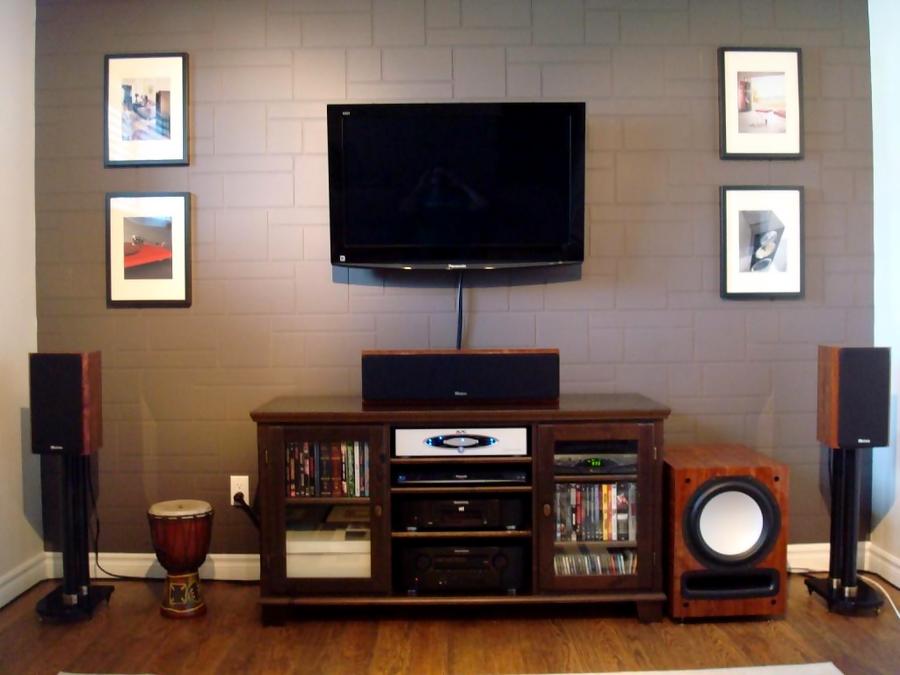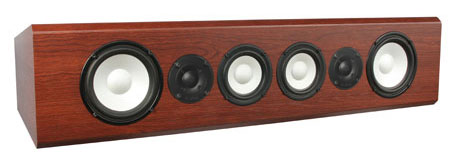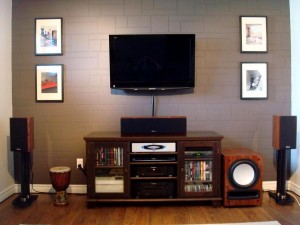It's a question we hear a lot: can you mix old and new speakers in a home theater audio system? Good news - you absolutely can! Whether you're upgrading a home-theater-in-a-box you bought at the local big-box store, or if you're just starting out with some speakers you found in the garage, here's the right path to take if you would like to ease into a new home theater system.

If you've been listening to the same stereo speakers you got in high school, trust me - times have changed and sound has improved. Start with upgrading these first.
Get new speakers for left-and-right channel output first. Make sure they're large enough for the room they're filling. As a general rule, the further back you are sitting from the screen, the larger the speaker will need to be to give you a great sound experience. It's a matter of physics. Tiny speakers don't move enough air through them to produce realistic sound in a room with arched ceilings or large dimensions. Don't worry about getting speakers that are too big for your room though - you can turn them down in your receiver's set up menu if the output is too much.
Meanwhile, take those old stereo speakers, and move them to the effects channels, more commonly known as surround sound speakers. Place them behind the listening position and try to get them elevated at least two feet above your ears when you are seated, and somewhere between directly out to the side of you, or back up to about 20 degrees or so. This will place the surround effects where the producer of the album or movie intended the sound to fall.
You may notice that the surround sound doesn't always flow smoothly behind your head. This is common with direct-firing speakers. As you begin to upgrade your system, look at surround speakers that have woofers and tweeters on the sides as well as top and bottom of the cabinet. This multi-directional approach - referred to as quadpolar or dipolar - makes sound diffuse throughout the room, and creates a much more realistic surround experience.

Next, as budget allows, add a center channel. It's important that the drivers - the woofers and the tweeters - are of the same approximate size and material as your left-and-right speakers in order to create what is called a 'seamless soundstage' - that is sound that doesn't change as it pans across your front speakers. If a voice starts to the left of the screen and moves to the right, you don't want it changing tone or timbre as it goes. For the most realistic sound experience, buy your center from the same lineup as the front channels - otherwise you may hear the sound change as dialog moves from side to side.
Positioning is important when you're placing speakers in a home theater audio system, and especially so with a center channel. Ensure that the sound is reaching you at the same time from every speaker by placing it as close as possible to the screen. Try not to recess the speaker into a cabinet, or if you do, pull it forward when you are getting ready to watch movies or listen to music.
Finally, add (or upgrade) a subwoofer as your budget allows. If you've been using an old subwoofer from a home-theater-in-a-box setup, upgrading to newer subwoofer technology will create a very audible difference. Don't skip this step - most speakers lose output below 30 Hz - or you'll be missing out on the most thrilling parts of movies and music.Tight deep bass and sub-sonic sound simply isn't available in those small cube subs, or from bookshelf or tower speakers. A well-designed subwoofer adds realism by recreating the sound of a big drums, low rumbling explosions and more.
There you have it! A simple upgrade path to take you from stereo to a full-fledged 5.1 home theater audio system step-by-step.






